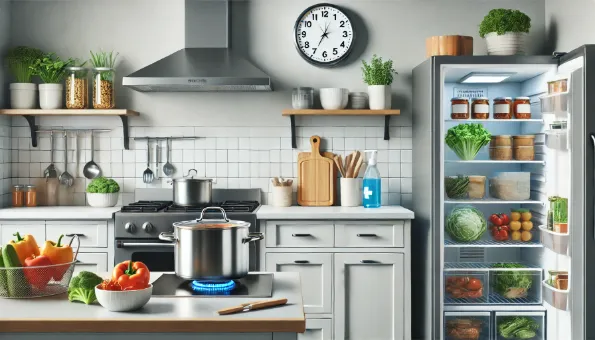Food‑Safety 101: Beat the ‘Danger Zone’ & Stop Cross‑Contamination
Keep cold food ≤ 4 °C, hot food ≥ 60 °C, wash hands 20 s – small habits that slash food‑poison risk at home.

Hook
**Left‑out chicken salad can double its bacterial load every 20 minutes between 5 °C and 60 °C.**
TL;DR
- Danger zone: 5–60 °C (41–140 °F)
- Separate raw & ready‑to‑eat foods
- Cook poultry to 74 °C (165 °F)
- Chill leftovers within 2 h
Why food safety matters
One in ten people worldwide falls ill from contaminated food each year (WHO 2023) – most cases start in home kitchens.
Know the ‘danger zone’
Pathogenic bacteria grow fastest **between 5 °C and 60 °C**. Limit time foods spend in this range to < 2 hours cumulative.
Cross‑contamination cheatsheet
- Use separate chopping boards (red = raw meat, green = veg).
- Store raw meat on the **bottom fridge shelf**.
- Wash knives & hands with soap after touching raw proteins.
Safe internal temperatures
| Food | °C | °F |
|------|----|----|
| Chicken, turkey | **74** | 165 |
| Ground beef | 71 | 160 |
| Whole cuts beef/lamb | 63* | 145* |
| Fish | 63 | 145 |
| *Rest 3 min before carving* | | |
Cooling & storage guide
- Fridge ≤ 4 °C; freezer ≤ ‑18 °C.
- Divide large pots into shallow containers for rapid chilling.
- Eat leftovers within **3–4 days**.
Myth vs fact
| Myth | Fact |
|------|------|
| “Smell tells if food is safe.” | Listeria and Salmonella have **no odour**. |
| “Rinsing poultry removes germs.” | Splashing spreads bacteria; heat kills. |
Interactive bonus
👉 **Download our printable fridge/freezer thermometer chart** and stick it to the door.
Take‑home message
Cold ≤ 4 °C, hot ≥ 60 °C, clean boards & hands – three habits that keep your household safe.
References
1. WHO. *Food Safety Key Facts*, 2023.
2. USDA. *Kitchen Companion: Your Safe Food Handbook*, 2024.

